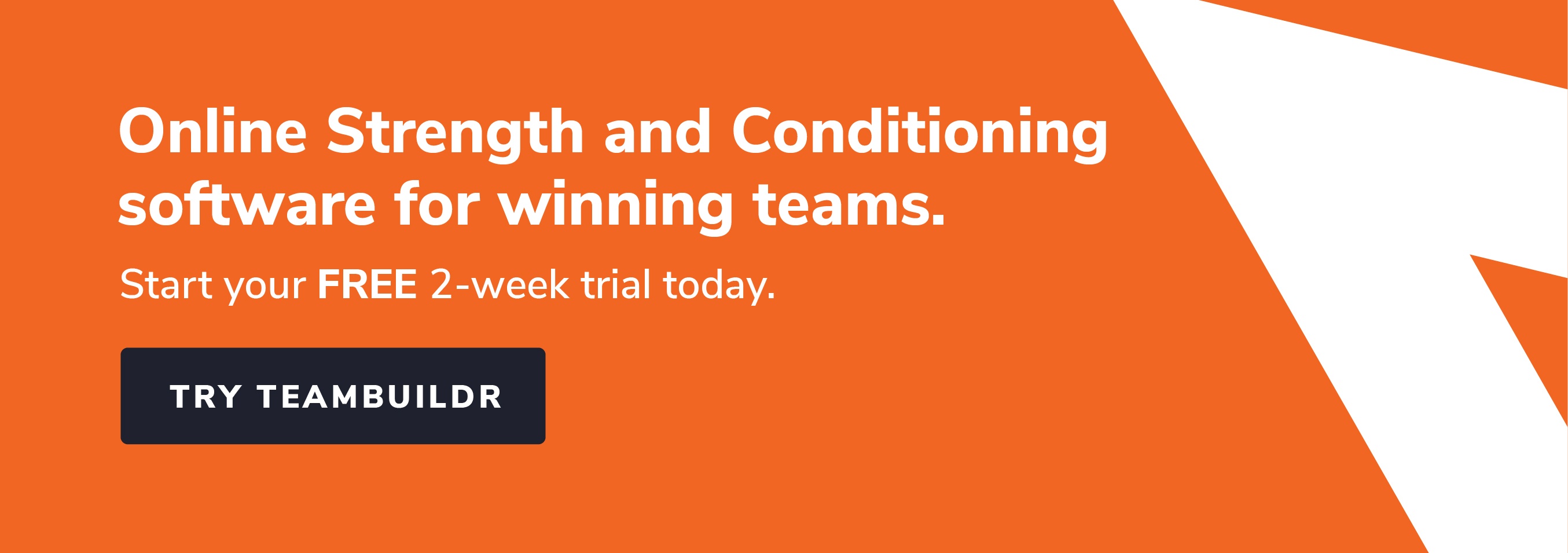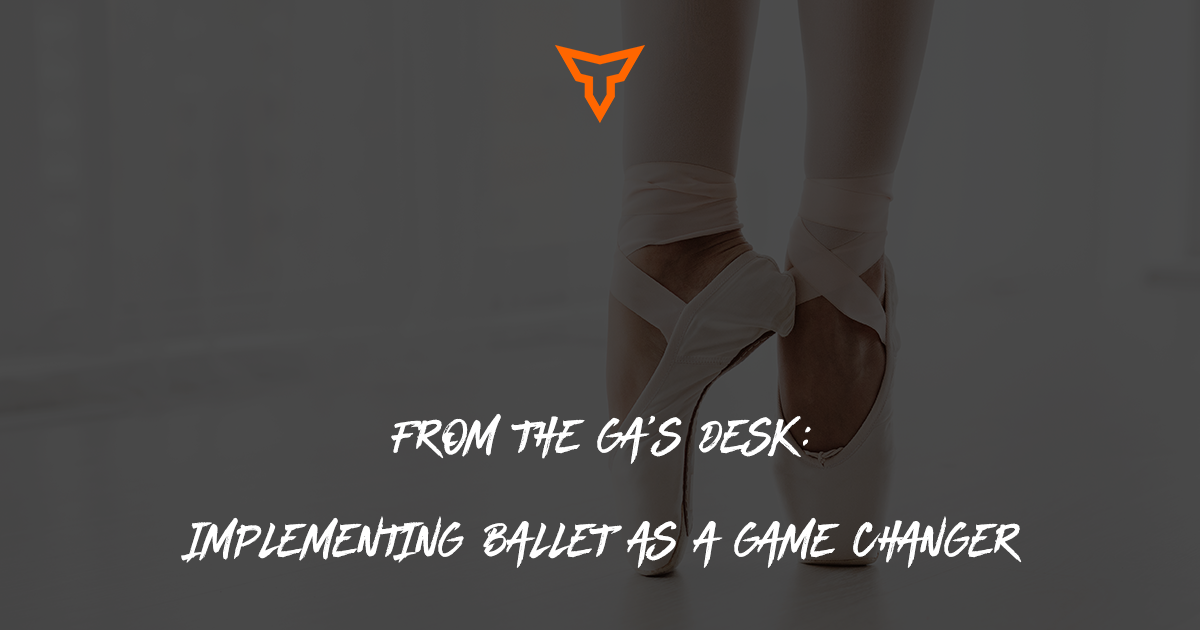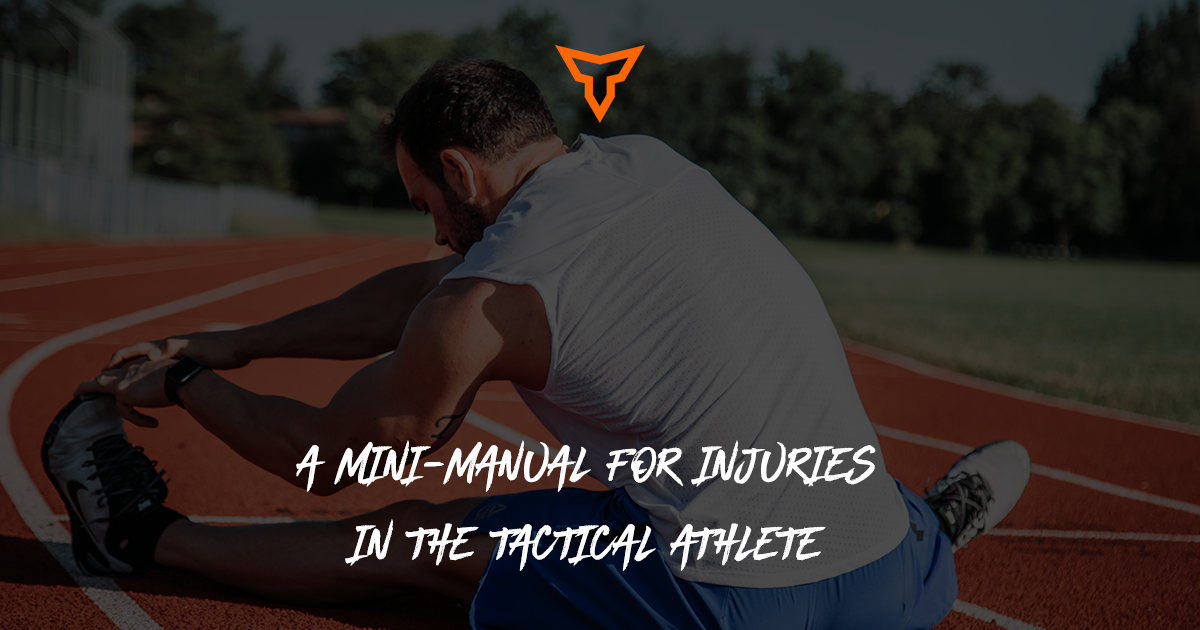How I Pursue a 0% Non-Contact ACL Injury Rate
One of the best perspectives on goal-setting is to start with the end in mind. Regardless of the desired training outcome, strength coaches should also approach their programming with the end in mind. If a coach's goal is strength, then work backwards from what a strong athlete looks like. Same goes with other training outcomes; if the goal is to make them a stronger, more resilient work backwards or return to competition, let's work backwards from there.
Coach obviously cannot prevent all injuries in their athletes; there will always be risk involved when it comes to physical competition. However, as a strength coach, you have an obligation to your athletes to make them as resilient as possible. The program should always include some type of preventive training for the most common injuries seen in the sports being trained. One of the most common and devastating injuries an athlete can suffer from is an ACL (anterior cruciate ligament) injury. Just hearing the words "you tore your ACL" can be one of the most defeating things a young athlete can hear. As a coach your heart hurts for an athlete when they suffer any injury, let alone an ACL tear. Everyone knows the athlete has a long road ahead of them, unsure of the permanent physical and mental long-term effects.
In order to “prevent” something we need to understand what exactly it is we are trying to prevent. How can you combat something when you don’t know how it works. This is for any injury not just an ACL injury. As a coach you need to understand inside and out the mechanism of injury. Why does the injury happen? How does it occur? Once you now this you can begin putting the pieces of the puzzle together. As a strength coach we have a duty to help our athletes prevent ACL tears. We need to understand a few things when it comes to an injury.
First a little background information:
What is the ACL?
It’s one of four major ligaments of the knee and is one of two inside the knee. It attaches to the back of the femur to the front tibia.
What does it do?
It’s most important job is providing stability to the joint. More specifically It prevents the tibia from sliding out in front of the femur and prevents it from shifting during cuts, shuffling, and other side to side movements. In other words rotational stability to the knee.
How is it injured?
Either from direct contact or when there is enough force generated causing the inside part of the knee to open up like a hinge and stretch the ACL past its limit.
Most common non-contact causes are:
- Changing direction rapidly
- Stopping suddenly
- Decelerating
- Poor landing
70% of ACL are considered non-contact. Again, 70% ARE NON-CONTACT.
This is something we can and should be able prevent. It needs to change and it starts with educating first ourselves and second sport coaches and parents. Those at highest risks are athletes involved in sports where there is a lot of pivoting and cutting like football, basketball, and soccer. There are many other factors both intrinsic and extrinsic involved in ACL injuries. Your internal factors are age, sex, and body composition. While external factors are shoes, surface of play etc. We also know females have a higher risk of ACL injury. Not what I want to discuss in this article though. What I really want to focus on is how understanding the mechanism of injury (MOI) will allow you to put together a program you can use keeping your non-contact ACL injuries at 0. I also would like to give you some simple assessment tools and exercises at the end to help you develop your own prevention program.
The MOI
Most of you already know what the MOI of injury is for an ACL tear. You’ve probably seen some of your athletes in this position. You may have even thought to yourself, “She’s an ACL injury waiting to happen.” I know I have. I’ve even told parents if you don’t get her to a good strength coach it’s only a matter of time before she tears it. The position I’m talking about is lower extremity valgus. But what’s actually happening?
From the hip down what’s occurring during valgus alignment is hip adduction, hip internal rotation, tibial anterior translation. Let’s take a deeper look at these mechanisms and the muscles involved.
Hip/femoral adduction:
In order to minimize hip adduction we need to strengthen hip abduction. The major muscles involved with hip abduction are the TFL (tensor fasciae latae) and the three gluteal muscles (maximus, medius, and minimus).
A quick note on the TFL, it’s main job is to stabilize the hip during hip extension. It’s also used during hip abduction, hip flexion, and internal rotation of the hip. As previously mentioned, one of the mechanisms of an ACL tear is internal rotation of the hip.
When the Glutes get tired or we can use the catchy word of shut off or inhibited (they are weak) something needs to take over to help the body perform the task we are asking it to perform. Most of the time this the TFL taking over. Knowing this, especially in athletes with weaker glutes, while it may look like they are doing a glute exercise properly they may actually be using the TFL. Which is exactly what we don’t want. Do your job as a coach and ensure they are actually getting the glutes stronger and not just continuing to compensate with the TFL.
Hip internal rotation:
In order to minimize hip internal rotation we need to strengthen hip external rotation. The major muscles involved with hip external rotation are the lateral rotator group which is group of six smalls muscles deep to the gluteal muscles also the gluteus maximus to some extent will help with hip external rotation.
Anterior tibial translation:
This occurs when the front of the lower leg comes forward. One of the things preventing this is the ACL. There are also a few muscles involved preventing this movement and those are going to be the hamstring muscles.
On the Ankles
If the ankle has poor dorsiflexion this becomes an issue as it prevents the tibia from being able to move forward. Think angles here: what is the angle we are always looking for in acceleration? 45 degrees. It does not matter if it’s linear or lateral acceleration a 45-degree shin angle is something athletes need to achieve. When ankles can’t get to this angle something has to occur in order to generate power. Typically we will see the foot pronate to allow forward movement, but this forces the tibia to internally rotate. As we move up the chain this internal rotation of the tibia leads to internal rotation of the femur/hip, which leads to hip adduction which is our mechanism of injury.
Once an athlete displays these ankle mechanics, coaches should realize that it's not just a strength issue but a neurological issue as this valgus movement pattern has been ingrained into the athlete's movement. We are going to need to teach them how to move and engrain some new patterns. Nobody taught them how to run and jump, hence, their body did what was easiest and not what was best in terms of injury prevention. One of the main goals when preventing ACL tears is to ensure that proper neuromuscular and biomechanical patterns are ingrained into our athletes.
Faulty mechanics can happen for several different reasons from poor trunk position, unequal limb loading, and lack of strength/control/proprioception to avoid the valgus position. We see this even more so when athletes are fatigued. I don’t necessarily mean the end of the game fatigued; I’m talking accumulation of stressors. Stress is stress from practice, games, family, school, relationships, etc. which all take a toll on the body. Most ACLs occur early in a game when your athlete produces the most force.
When designing a prevention program it’s hard to know where to start and which component is the most important to the prevention. Does a coach focus on strength, balance, body awareness to vulnerable positions, agility, or technique? In order to ensure proper neuromuscular control there is a balance between strength, mobility, kinesthetic awareness, joint mechanics, and other adaptive motor control strategies and all of these should be included in your program.
In a perfect world every strength coach would be able to tailor a program for each athlete in the program based on their individual needs. But that situation is not feasible for many of us, so our ACL prevention program needs to cover the majority of our athletes and where they are at. I’m not sure which of these will prevent a non-contact ACL injury and honestly I do not care as long as they are prevented. I know if I want results now I need to incorporate all of them together and I need to teach and enforce mechanics daily. I know as coaches we love sprinting and jumping but the ACL injury occurs during deceleration, landing and COD. It needs to be one of the most important aspects of your program.
Videos to shoot for your athletes:
Tests
Explain what the ankles, knees, and hips are doing.
Bodyweight Squat
Altitude Landings: knees coming in, knees shifting forward
Exercises:
Balance Exercises
Plyometric Exercises
Strength Exercises
Ready position:
Landing: Sing leg and Dual leg
Linear deceleration
Lateral Deceleration
Strength work:
Box squat
Single leg work
Sumo deadlift
Conventional deadlift
Nordic hamstring curls
GHR
Stability ball curls
Core:
Bird dog
Deadbugs
Rolling planks

Subscribe to our blog
Subscribe to receive the latest blog posts to your inbox every week.
Related posts

From the GA's Desk: Implementing Ballet as a Game Changer

A Mini-Manual For Injuries in the Tactical Athlete
